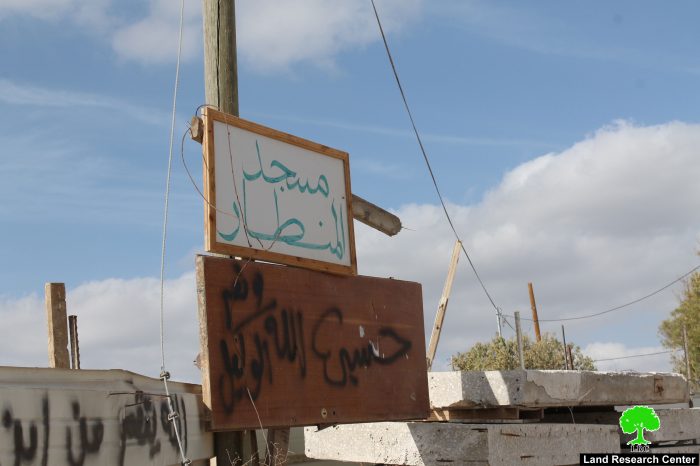Bulldozers of the Israeli municipality demolished on November 15, 2016 the foundations of Al-Munthar mosque in the area of Wad Al-Hummus of Sur Baher town, south Jerusalem city on the claim of "unlicensed construction"
A member of the mosque committee, Mohammad Afaneh, told Land Research Center the following:
" It was planned to build a 200m2 mosque on a plot donated by one of the heirs of Ahmad Al-Basit. Donations were collected from the area's residents to build the mosque since the area lacks one. There is only one mosque that is 1500m away from the neighborhood and the road to which is unpaved.
In September 2016, we started to build the foundations of the mosque by pumping cement on 200m2. One month later, employees from the municipality arrived at the location and notified us with stop-work"
He added: " We didn’t apply for a building permit knowing that the area is unplanned and the municipality never grants such permits in such areas. Also, the permit procedures might take up to five years.
On November 15, 2016 dozers of the municipality arrived at the place, closed the area and embarked on demolishing the mosque. The demolition operation lasted for 7 hours"
It should be marked that many structures and residences in the area of Wad Al-Hummus are now threatened of demolition for they lack building permits\licenses. Noteworthy, the neighborhood is separated from Al-Sheikh village by the apartheid wall.
Land Research Center documented attacks on eight mosques and one church in the West Bank. Jerusalem city got the highest rate of attacks where Hebron came second. Two mosques were demolished in Jerusalem and one was threatened of demolition. As for Hebron, two mosques were broken into and later demolished. Qalqiliya city witnessed the firing of stun grenade into a mosque.
More importantly, AL-Aqsa mosque of Jerusalem was broken into more than 121 times during 2016. Not only, the call to prayer was banned 538 times at the Abraham Mosque in Hebron city. The below graph illustrates the number of attacked mosques and churches in 2016:
Land Research Center sees that attacks and violations on worshiping places a clear-cut breach and contradiction with the international and lawful conventions, which stated the prohibition of any act of violation against historical and artistic sites in addition to worshiping places. Such conventions are :
Hague Convention ;CONVENTION RESPECTING THE LAWS AND CUSTOMS OF WAR ON LAND Art. 56
The property of municipalities, that of institutions dedicated to religion, charity and education, the arts and sciences, even when State property, shall be treated as private property.All seizure of, destruction or wilful damage done to institutions of this character, historic monuments, works of art and science, is forbidden, and should be made the subject of legal proceedings.
Geneva Convention; Protocol I:
Article 53 outlaws attacks on dams, dikes, nuclear generating stations, and places of worship. The first three are "works and installations containing dangerous forces" and may be attacked but only in ways that do not threaten to release the dangerous forces (i.e., it is permissible to attempt to capture them but not to try to destroy them).
Prepared by
The Land Research Center
LRC


















